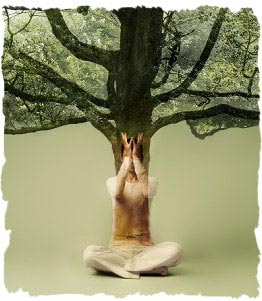Types and Comparison with the Allopathic Counterparts

Anatomical and Physiological Importance
Srotas, in broad term refers to the channels of circulation present in the human body. Anatomically and physiologically, channels of circulation have great importance. The credit of defining Srotas for the first time goes to the great Indian surgeon, Sushruta first of all. Sushruta says that the channels of circulation are present in intra-cellular, inter-cellular and extra– cellular spaces) of the human-body.
The major function of the channels of circulation is active transportation of the fluids in a continuous fashion. Anatomically, the channels of circulation are distinct from blood vessels including arteries, veins and capillaries and are omnipresent in the human body. From physiological point of view, channels of circulation are primarily responsible for the circulation of three biological humours, tissues and waste-products to organs and organelles.
Pathological Importance
According to the Ayurvedic pathology, the diagnosis of the disease is based on malfunctioning of any of the three biological humors. One humour creates spill-over effect in the human body. The disease having roots in one of the biological humour can travel though the channels of circulation and reach site of another biological humour. Aggravated biological humours obstruct the channels of circulation thus creating hindrance in the transportation of the fluids.
Classification of Channels of Circulation
According to Ayurvedic anatomy, men contain thirteen groups of channels of circulation. Women, on the other side have fifteen channels of circulation.
Men Channels:
1. Pranavahastrotas (Air Channels of Circulation)
The site for Pranavahastrotas is the heart and the gastrointestinal tract. They are responsible for proper circulation of oxygen to the tissues. When Pranavahastrotas are obstructed, respiratory ailments, anxiety-neurosis and impending fear are the presenting features.
2. Annavahastrotas (Food Channels of Circulation)
The site for Annavahastrotas is the stomach and left side of upper abdomen. The chief function is transportation of food in the digestive tract. When these are obstructed, loss of appetite, dyspepsia, emesis and anorexia, are the presenting features.
3. Udakavahastrotas (Water Channels of Circulation)
The site for Udakavahastrotas in the talu (palate) and aganshya (pancreas). The chief function is regulation of the body fluid. When Udakavahastrotas is affected, there can be symptoms like excessive dryness of mouth, tongue, lips and palate. Excessive thirst is also a symptom of its vitiation.
4. Rasavahastrotas (Channels of Circulation)
Rasavahastrotas originate from the heart. They are responsible for transportation of rasa (plasma) through blood vessels to the rasa dhatu. Symptoms of its damage are similar to that of Pranwahastrotas channels, even death can happen.
5. Raktavahastrotas (Rakta Channels of Circulation)
Raktavahastrotas originate from the ykrita (liver) and pliha (spleen). The chief function of Raktavahastrotas is transportation of rakta (blood) to the rakta dhatu. Symptoms of damage are skin redness, eye redness, skin changes, fever, anemia and other blood disorders.
6. Mamsavahastrotas (Muscular Channels of Circulation)
The origin of Mamsavahastrotas lies in the snayu (ligaments), kandra (tendons), and tvak (skin). They ensure supply of nutrients to the muscle dhatu. Symptoms of damage are tumors, cysts, wasting of muscles, swelling etc.
7. Medavahastrotas (Fat Channels of Circulation
The origin of medavahastrotas (the adipose tissue), lies in the in the vrrka (kidneys) and the omentum. They ensure proper supply of fatty tissue ingredients to the Meda dhatus. Symptoms of damage are edema, thirst, obesity etc.
8. Asthivahastrotas (Bone Channels of Circulation)
Asthivahastrotas originate from meda and thigh part. They are responsible for supplying nutritional factors to the asthi (bone) and extra-articular apparatus.
Symptoms of damage are excessive growth of teeth, bony tissues, deformities of hair, bones, nails and teeth etc.
9. Majjavahastrotas (Bone-marrow Channels of Circulation)
Majjavahastrotas originate from joint and bone. They are responsible for supplying nutritional factors to the majja (bone marrow) dhatu. Symptoms of damage are being crushed, trauma, injury etc.
10. Shukravahastrotas (Ovum and Sperm Channels of Circulation)
The originating point for Shukravahastrotas is in the testes and ovaries. Their prome responsibility is to carry sukra (semen), dimba (ovum), and ojas (immunity) the male and female reproductive system. Symptoms of damage are erectile dysfunctions, premature ejaculation, impotency, scrotum and penis diseases etc.
11. Mutravahastrotas (Urinary Channels of Circulation)
The vrrika (kidneys) and mutrayshya (urinary bladder) consist Mutravahastrotas. When it is vitiated, symptoms can be noticed are- voiding too much of urine, suppression of urine, urination associated with pain etc.
12. Purishvahastrotas (Excretory Channels of Circulation)
The originating point for Purishvahastrotas is in the colon and rectum. They help in evacuation of feces from the human body. When Purishvahastrotas is affected, symptoms like improper evacuation, loose motions, constipating, difficulty and passing stools, undigested food evacuation, painful evacuation etc. can be seen.
13. Swedavahastrotas (Sweat Channels of Circulation)
The originating point for Swedavahastrotas is in the adipose tissue and hair follicles. They help in evacuation of expelling sweat the human body. When it is vitiated we can see various symptoms like excessive perspiration, less perspiration, roughness of skin etc.
Female Channels: Anatomically, females have two additional channels of circulation
14. Aartavahasrotas (Menstrual Channels of Circulation)
Aartavahasrotas flush menstrual fluid, and products of waste from the garbahshya (uterus), and the breast milk channel, which carries milk to the nourishing mother’s breast. There site is garbahshya (uterus) and aartava vahi Dhamanies. Symptoms of its damage are infertility and menstrual abnormalities.
15. Stanyavahasrotas (Milk Channels of Circulation)
Stanyavahasrotas are part of the Rasavahastrotas.
Significance
Srotas (Channels of Circulation) have great significance in Ayurvedic system of medicine, as far as disease and health is concerned. Channels of Circulation are working at micro as well as macro levels in the human body. Charaka sees Srotas as the channels through which various important physiological functions takes place.
